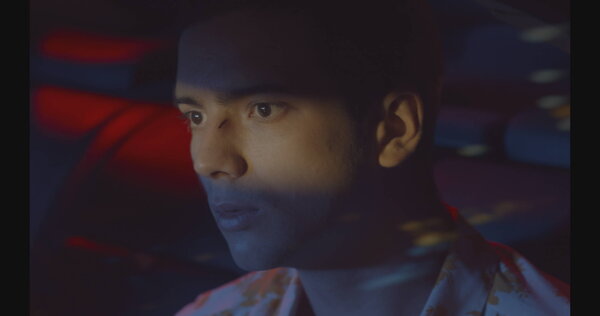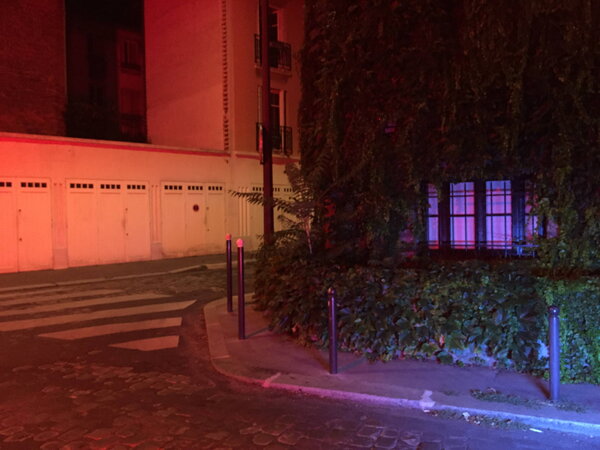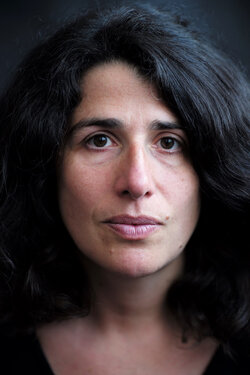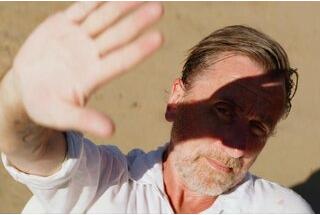Ghost meets Girl
Interview with cinematographer Céline Bozon, AFC, about her work on Stéphane Batut’s “Vif-argent”, by François Reumont for the AFCJuste is wandering around in Paris looking for people that only he can see. He collects their last memory before sending them off into the next world. One day, a young woman, Agatha, recognizes him. She is alive, he is a ghost. How can they love one another, seize the opportunity of this second chance ?

"It’s pretty rare to receive projects that go this far in this direction, and to be able to say to oneself that you’re going to be able to almost create the image for three films in one and create links between these three universes." The cinematographer launched into this story of a ferryman between the world of the living and the dead with Orpheus and Jean Cocteau on her mind, who remains one of her classical models in the cinema. This is a film anchored in locations in the 19th Arrondissement of Paris between the area around the Buttes-Chaumont and the Rotunda of Stalingrad. "The film was shot over thirty-eight days, in different seasons, and a number of trips (an African tropical forest, a snow-covered Alpine valley, and a Mediterranean beach). All with a budget of 2.5million euros, which was not easy given the initial ambitions of the screenplay."

Asked about the main issues for her on this film, Céline Bozon replies unhesitatingly : “Colour ! Of all the films I have made, this is the first on which I really dared to unleash myself on the colours, playing with much more saturated and primary tones than I usually do. The question of this film on the night-time outdoors shots was, "How can I not just passively take the urban lighting ?”, how can I make something out of it ?”

“I said to myself that I had to make these Parisian streets become stranger and stranger as the film advanced, and more and more unknown. I had to rely on things that exist in the city to do that. Finally, the two main sources of inspiration were the redness of the lighting on the Canal de la Villette and the blue of the Corentin Cariou bridge.”

“For the taxi scenes (in the last part of the film) shot in studio over the course of a day, we chose live rear projection. The scene had been story-boarded and I decided to ask for two rear projections because we were placed in three-quarter view in relation to the actors ; so we needed two 90 degree screens. Not many people really believed in the system !”

“We shot the plates with two cameras. I knew that I would create a very artificial lighting in studio, and I was afraid that the night-time plates would appear terribly dull and realistic. I decided to light the plates (see photos in the portfolio) with two Kino Flo Selects, a red in the back and a blue on the side, two PARs in the front and a blue on the side in the other axis. I think that’s why this rear projection works, because the studio lighting and the plates became organic.
And moreover, the camera is more mobile in a studio than anywhere else.”

The game of coloured lights was also the opportunity to use Arri Sky Panels. “Without those lights and the possibilities that they open up in terms of allowing you to remotely adjust almost any colour, I think that I would never have given this type of image a try. Working in the old-school way, with the gels outdoors at night, can quickly become extremely time-consuming. But today, with DMX, you can control the colour and the intensity of the light sources remotely via a simple iPad. Moreover, I discovered that you can also use those Sky Panels very far away at night, not to provide a keylight on the backgrounds but instead to fill in the frontal low lights or elsewhere, which is extremely practical and creative, especially when you know you can change the colour of the shadows in an instant. Eric Gies, my gaffer for the Canal scene, was alongside me on a boat in the camera axis, and we would say to one another, "Go ahead, try it a bit more red, a bit more cyan, that light source is too strong, lower it by 20%..." It’s a wonderful tool and technological innovation. What I am trying to describe isn’t just a feeling of power (even if that’s a part of it !), but a gestural precision and subtlety in the decision making process regarding the relations between levels and colours that allow for a lot of improvisation in very complex light scenes, and a much more subtle relationship to the shot and the directing.”

Regarding the workflow and the image processing, from the first light tests, the cinematographer and her colour timer Raphaëlle Dufosset sought to give the high and low lights a different tint as the film progressed. “I had identified three moments in the film : the prologue (high magenta, low blue), the heart of the film (high red, low blue), and the end when the character really goes over to the other side and others become invisible to him (high blue, low blue). Each moment had its own LUT. I’ll add that Raphaëlle did a magnificent job of colour timing the dailies, which allowed us to experience beautiful screenings in the cutting room.”

Another tour-de-force scene from this film is a love scene between Agathe and Juste (who has become invisible), which was shot using Motion Control. “When you discover a scene like this in a screenplay of a film d’auteur such as Vif-argent, you say to yourself that it’s going to end up in a multipass and a fixed shot because of the budget. But in this case, the scene seemed to be of capital importance to me and being able to shoot it in motion would give a lot more sensuality on screen. This is a scene that Stephane and I spoke a lot about from the beginning. We began to search out an affordable camera solution on a computer-assisted travelling. While preparing for Madame Hyde, I’d heard about a Modula system made by Motion Control Europe (thanks to Alex de Heus !). This model can be taken apart and we could set it up on the sixth floor of that apartment building with a view on La Villette that housed the location of the apartment. Moreover, we used a motorized GF jib arm on tracks, especially for the shot above her.”

“The only complicated thing was being able to keep up as a DoP when the pressure of a set-up like that begins to weigh on the director and the production. Being able to reassure everyone, believing in it yourself, and showing that everything can still be done ! The shots that we assembled in compositing in the final cut are made of a reference pass with the two actors, a pass with her in black and black sheets on the male actor, and a pass with her without him. The amount of transparency of her body was done in postproduction, and I have to admit that that’s still something that we’re working on in special effects during these couple of weeks before the presentation at Cannes.”

The last challenge in terms of image was the last scene of the film, shot using a drone above the Parc des Buttes-Chaumont. “On this scene, which is not just a classic fly-over with a drone, we had to prepare a lot in advance with the aerial filming crew : Marc Didier and his cameraman Jeff Ropars. Taking advantage of their suggestions during scouting, Stephane and I together developed the choreography of this scene involving a complicated movement over the two actors, one of whom ends up alone in the park at sunset. This shot was filmed in one session at dusk, after we’d literally had the park evacuated in order to be allowed to have the flight authorization for the drone.”

(Interview conducted by François Reumont on behalf of the AFC, and tranlated from French by Alexander Baron-Raiffe)
Vif-argent
Set design : Laurent Baude
Costumes : Dorothée Guiraud
Sound : Dimitri Haulet
Editing : François Quiqueré
 En
En Fr
Fr






